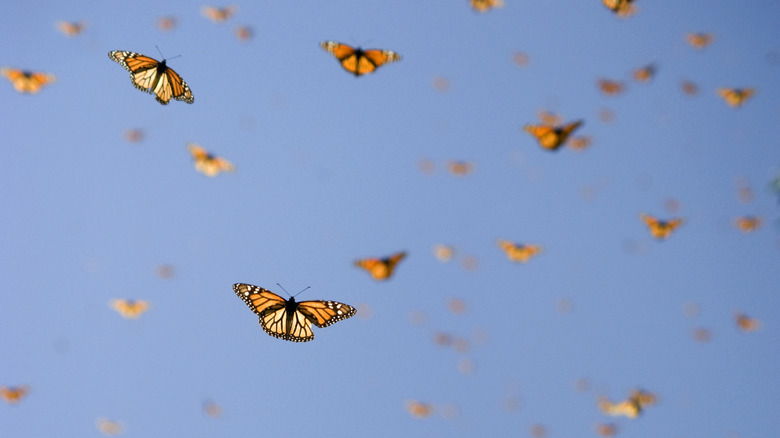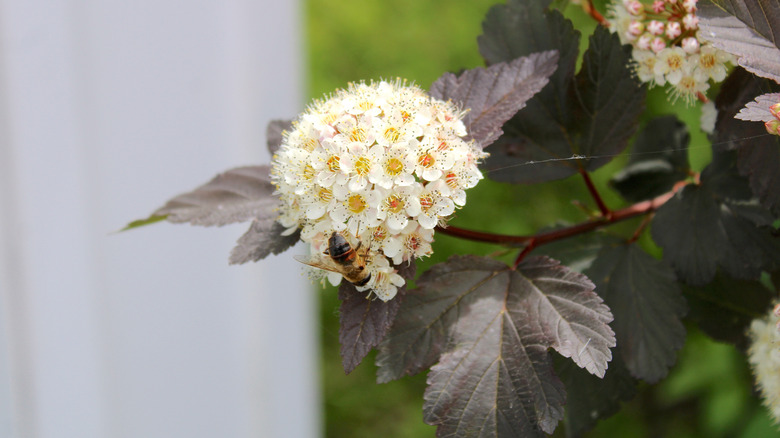The Fast-Growing Privacy Shrub That Pollinators Will Flock To In Your Yard
While bees and butterflies may be welcome visitors in your yard, nosy neighbors and passersby are likely less appreciated. Luckily, there's a North American native shrub that not only makes a great privacy hedge but also helps to attract pollinators – common ninebark (Physocarpus opulifoliu). Not only can ninebark grow up to 10 feet tall, depending on the cultivar, and because it is one of the fastest-growing plants, it can often reach its full height in just a year or so. Best of all, it's a great way to attract bees, butterflies, and even songbirds to your garden and yard.
Native to eastern and central North America, ninebark serves as an important nectar source for butterflies thanks to its beautiful clusters of flowers. It is also a host plant to many types of caterpillars. Birds are also attracted to the plant thanks to the caterpillars that are often on it in spring and summer, as well as the small fruits it has during fall and winter. Even native bees are fans of ninebark. While there are a variety of ninebark cultivars with leaf colors ranging from reds and purples to yellows and greens, the green-leafed varieties seem to be most beneficial for native insects.
Finding the right ninebark for your privacy hedge
There are a variety of dwarf ninebark cultivars available, but you'll likely want to opt for a larger shrub if your goal is to create a more private yard. The 'Luteus' cultivar could be a good option for this, thanks to its height and width, which can reach up to 10 feet. With chartreuse leaves and delicate clusters of white flowers, it would make quite a statement as a hedgerow. 'Nugget' or 'Snowfall' are a bit smaller but could also be excellent options for privacy, thanks to their dense habits.
Hardy in zones 2 through 8, ninebarks are ideal shrubs for both full and part sun locations. They are tolerant of a range of soil conditions and even can handle bouts of drought. This makes them an excellent option for gardeners who are hoping to reduce their water footprint while still growing vibrant plants and helping native pollinators.

